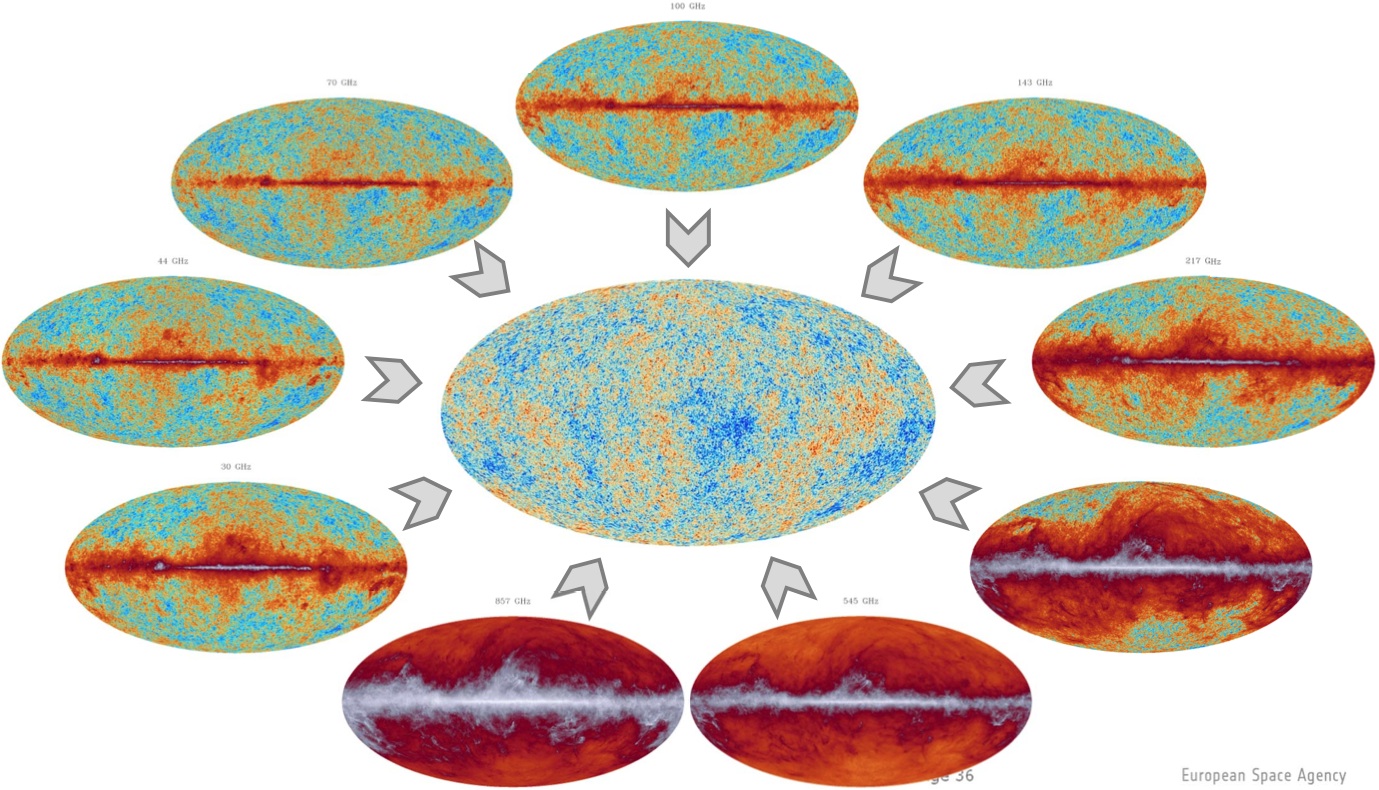
In March 2013, the European Spatial Agency released the new reference map of the Cosmic Microwave Background (CMB), a product of the Planck collaboration.
This image of the Universe in its early infancy was obtained by linearly combining the full-sky maps observed by Planck in nine frequency channels from 30 GHz to 857 GHz, thusly:

Yes, this can be seen as a component separation problem! The Planck component separation effort is summarized in this paper.
The Planck CMB map is obtained by a blind component separation method dubbed SMICA (for Spectral Matching ICA) which I hand-tailored for Planck. The main ideas are described here. Some limited details are in the Planck paper cited above.
For some background (!) about signal processing for the CMB, you may have a look at this introductory paper: Precision cosmology with the cosmic microwave background ("IEEE Signal Processing Magazine", vol.27, no.1, pp.55,66, Jan. 2010), which does not focus on component separation but rather on the fun of working on the sphere...